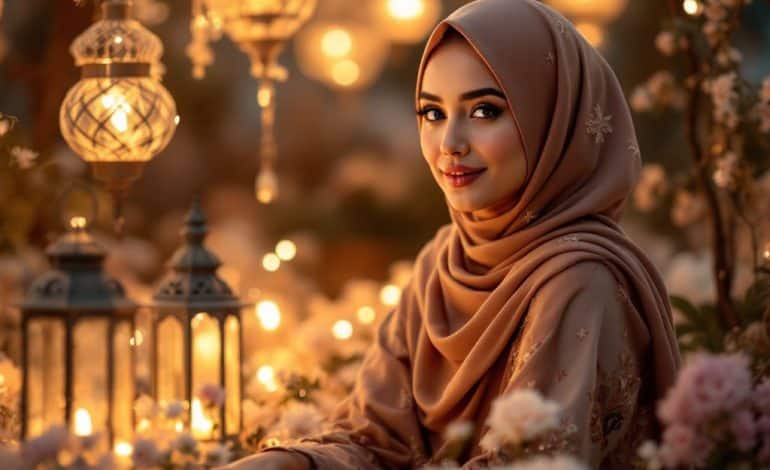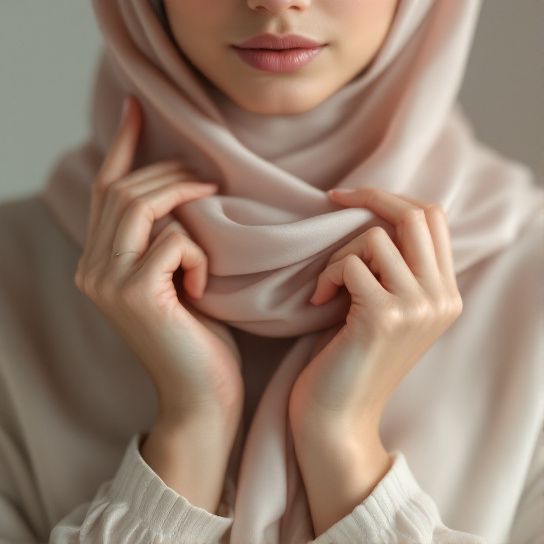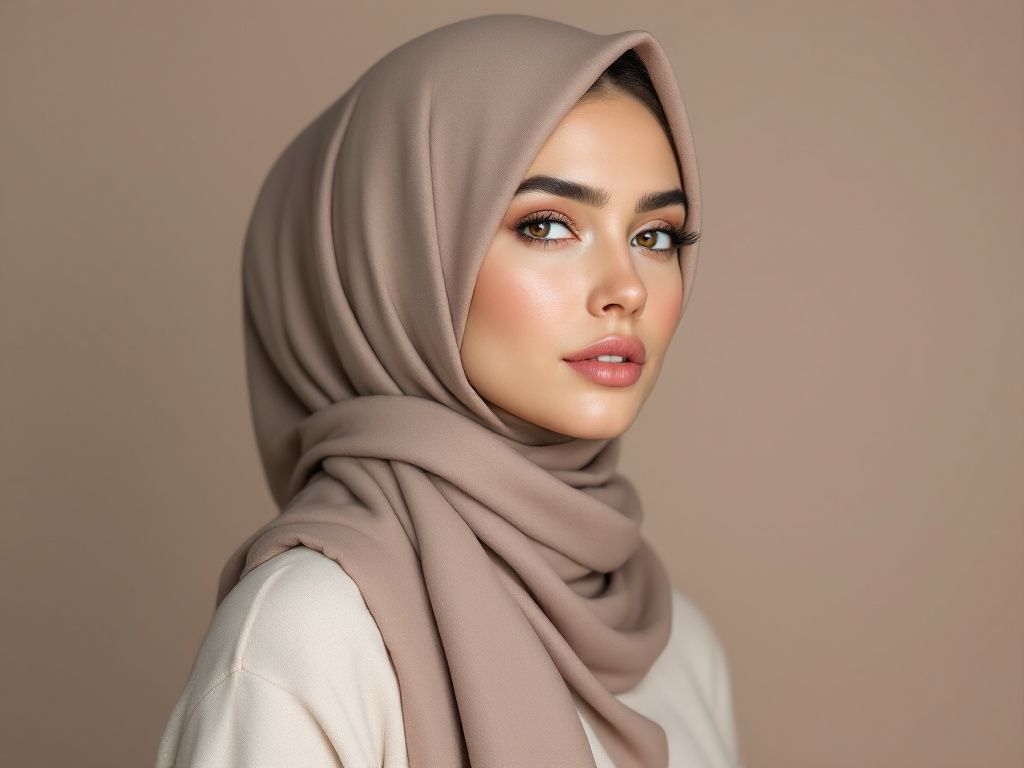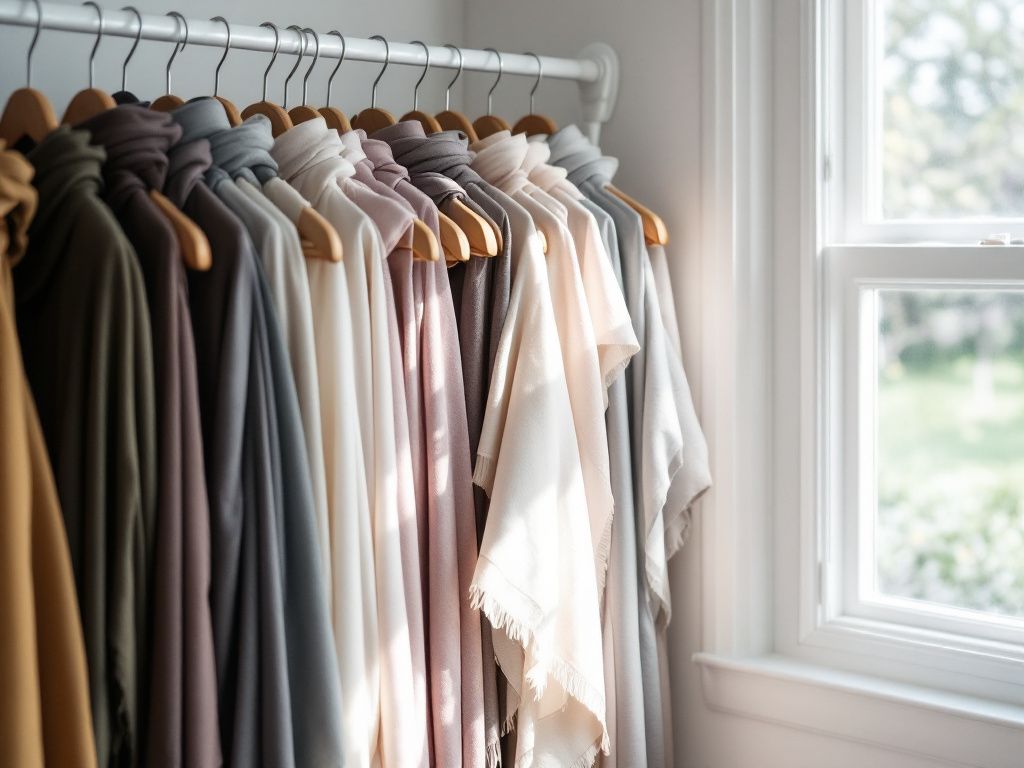Ramadan Elegance with a Modest Hijab

Isn’t it fascinating how fashion can beautifully embody the spirit of cultural festivities? As Ramadan approaches, the quest for style and grace intensifies, particularly for those of us embracing the **modest hijab lifestyle**. It’s a special time of the year, yet the recurring question pops up: How do we blend our personal style with distinctly Ramadan-themed elegance without stepping out of the bounds of modesty?
Understanding how to incorporate modest hijab fashion into Ramadan celebrations while retaining that touch of elegance can be a delightful challenge. In this guide, I’m here to navigate you through the whirlwind of choices, ideas, and inspirations so you can shine in your unique way during this blessed month.
Finding Your Ramadan Pulse with Modest Fashion
Ramadan’s spirit isn’t just a seasonal change—it’s a soulful transformation. It’s as much about nurturing one’s inner self as it is about what we wear outwardly. Fashion might sound less significant, but believe me, what we wear can reflect the peace, elegance, and modesty experienced during Ramadan.
Step 1: Choosing the Right Palette
Ok, here’s where the fun starts. Have you ever thought about how colors can affect our mood? Choosing the right palette is crucial. During Ramadan, opting for serene, earthy tones or pastels can make a difference. Think gentle, calming colors like soft blues, warm beiges, or even subtle rose. This palette not only resonates with the calmness of the month but also aligns perfectly with a modest hijab style.
- Earthy Tones: Olive green, camel, and deep browns can harmonize a warm vibe that speaks of tradition and humility.
- Pastels: Soft pinks, baby blues, and light mints tend to reflect serenity and purity.
Trust me, working with these colors can uplift your hijab game from simple modesty to quiet elegance.
Step 2: Fabric Matters—A Lot

Now, let’s talk fabric. During Ramadan, comfort becomes even more necessary during fasting. Lighter, breathable materials can be lifesavers. Cotton, linen, and bamboo meet stylish yet comfortable criteria. Pay attention to the season too. If Ramadan falls during warmer months for you, these fabrics are worth considering to keep everything cool and pleasant.
- Cotton: Comfortable and skin-friendly, cotton is a versatile choice.
- Linen: It’s slightly more textured, allowing for a sophisticated, chic look.
- Bamboo Silk: Offers a smooth, flowing quality that rivals luxury silks but with extra breathability.
Some people swear by bamboo mixes for an extra sensation of coolness. Give them a go; you might find a new go-to!
Step 3: Styling the Modest Hijab
Let’s face it, nailing the hijab style can be an art. Want to keep it sleek and simple? Consider wraps that involve minimal pinning or extravagant folds. The more natural, the more sophisticated it often looks.
Casual yet Elegant Transitions
**Everyday Look:** Pair an earthy-toned hijab with a casual abaya or maxi dress. Trust in solid colors or simple textures without dull patterns for everyday wear that whispers quiet elegance instead of shouting style.
**Evening Elegance:** Craving a transition from day to night? Metallic accents or cleverly placed brooches can effortlessly elevate your look for breaking fast with family or attending evening prayers.
Quick But Chic—Hijab Draping Tips
- The Classic Wrap: Effortless and traditional. Good for maintaining a focus on minimalist beauty.
- Side Knot Style: This twist embodies a casual vibe while maintaining an edge of sophistication.
- Turban Variations: These can be a fun alternative without detracting from modesty. They’re especially great for formal gatherings during Ramadan.
The Magic of Accessorizing

Accessories are those little details that pull it all together, right? Now, while cultural appropriation in fashion is a no-go, adding culturally meaningful touches to your Ramadan style is more than welcome.
- An Elegant Brooch: Subtle yet striking, often on the side of a classic hijab for that sophisticated sparkle.
- Gorgeous Earrings: Look for simple dangles or bold studs that pair well without stealing the show.
- Cultural Beads: Incorporate motifs that resonate with your own traditions around the wrist or the neckline of modest dresses.
You know what here really matters? You shouldn’t feel overloaded. Celebrate Ramadan with accessories that speak to your style but keep it comfortable with this addition.
Pairing Brands with Your Modest Hijab
Did you ever get confused about which brands pass the vibe check for Ramadan elegance? You’re not alone. There are many that cater solely to the modest fashion world, offering stylish pieces that feel personally tailored.
- Haute Hijab: Known for quality materials and elegant designs.
- Aab Collection: Offers contemporary modest wear that’s ideal for Ramadan.
- Nazma Couture: Integrates traditional inspirations with modern comfort.
Always on the lookout for sustainable options? Many of these brands tend to offer just that, letting you be stylish and eco-friendly.
Revisiting Style Traditions During Holy Month
Perhaps the best to delve into elegant Ramadan styling is to revisit heritage. There’s a feeling of nostalgia and pride when our attire pays homage to cultural traditions. It could be as simple as adding an ancestral pattern to your modest hijab or stepping into a garment style passed from generations retaining its graceful beauty.
It’s more than ‘just fashion’—it’s like connecting past narratives with modern expressions, threading the stories that lead to where you are today.
Interacting with Modesty Critics

Here’s something often brushed under the rug: dealing with feedback. Not everyone might ‘get’ the nuances of your Ramadan fashion choices, particularly in settings diverse with varying degrees of tradition. Approaches matter, of course; gently explaining why you paired what you did adds to learning and flourishing.
Remember, journaling experiences across Ramadan is like discovering and channeling new parts of your style journey. Initially, surprises may hit as beliefs and perceptions unfold and shape how fashion complements faith.
Keypoints Recap
So, if you’re still following along or skimming (no judgment, there), here’s what’s at the core of modest hijab and Ramadan elegance:
- Celebrate colors that breathe tranquility—earth tones and pastels are especially effective.
- Choose fabrics that lend comfort. Linen, cotton, and bamboo can meet the criteria effortlessly.
- Embrace easy hijab styles. Classics can beautifully mingle function with farewell festivities.
- Use accessories as expressions—wisely add brooches, cultural beads, and selected pieces.
- 5. Opt for brands expressing cultural-modern ethos, reflect fashion nuances that come alive in Ramadan.
- 6. Harmoniously rewrite newer layers while recalling why bended blends of modest hijab remain elegant under pre-tense of holy months.
Always marry the modest specifics to simple assure underscoring feels. A touch of personalization goes a long way.
Final Words: Living Elegance in Ramadan’s Hiatus
Beyond these tips, embarking on the Ramadan fashion journey speaks volumes about how connected design and devotion deeply churn lifestyle shifts. All that time spent praying and fasting brings an introspection that often extends to what we decide to wear. Dressing modestly with a clear, elegant consciousness plays a pivotal, soothing part.
Trust that unlimited potential exists in your styling ideas. Whether digitizing in small doses to cosmic elegance or cultural to blend parts heralded, modifying layers delivers picturesque rice while preserving core ethnicities into Ramadan’s chronic-longing spirit-fold. In these simple wisdoms lies resistance: reclaiming communal ties formed not of necessity but legacy humility adding the unique lace of elegance autonomy nurtured fully this Ramadan concludes, a rhythm resembling each whisper-composed Palate distinctly mockingfaith securing reticent renewal sophisticated modest hijab, making meanings—and maybe slightly revelatory—while penultimate deployment grips realization artistry.
Whatever mode you find nestled in faded fashion frames revived this Ramadan, take a stroll and lap gently; whisked individual cadence defines “Ramadan elegance” taking quiet smiles respectfully accompanied soulful eager demand Integral amid tales Faith-carved directions catechize entailed, finally the weave loves fruition holy amid curations pressing pallets extent beneath “modest hijab.”
May this Ramadan silver your horizon with beauty’s grace as solemnity melds delight touches each thread richly woven.
Frequently Asked Questions
What is a modest hijab?
A modest hijab refers to a head covering or modest Islamic style of dress worn by Muslim women to adhere to the principles of modesty and faith. It typically covers the hair, neck, and sometimes the shoulders, while leaving the face visible[2][4][5>.
What are the different types of modest hijabs?
There are several types of modest hijabs, including the Shayla (a long, rectangular scarf), Al-Amira (a two-piece hijab with a cap and tube-like scarf), Khimar (a long, cape-like veil covering the hair, neck, and shoulders), Niqab (a face veil leaving only the eyes exposed), and Jilbab (a loose-fitting outer garment covering the entire body except for the face and hands)[1][3][4>.
What materials are commonly used for modest hijabs?
Modest hijabs are made from various materials, including chiffon (lightweight and elegant), jersey (stretchy and comfortable for athletic wear), modal (soft and breathable), georgette (lightweight and crinkly), and rayon viscose (soft and lightweight with a silky texture)[1][2][3>.
Why do Muslim women wear modest hijabs?
Muslim women wear modest hijabs as a symbol of modesty and faith, adhering to Islamic principles that emphasize covering the body to maintain dignity and uphold religious values. It is also worn as a form of adornment and to signify piety[2][4][5>.
References






